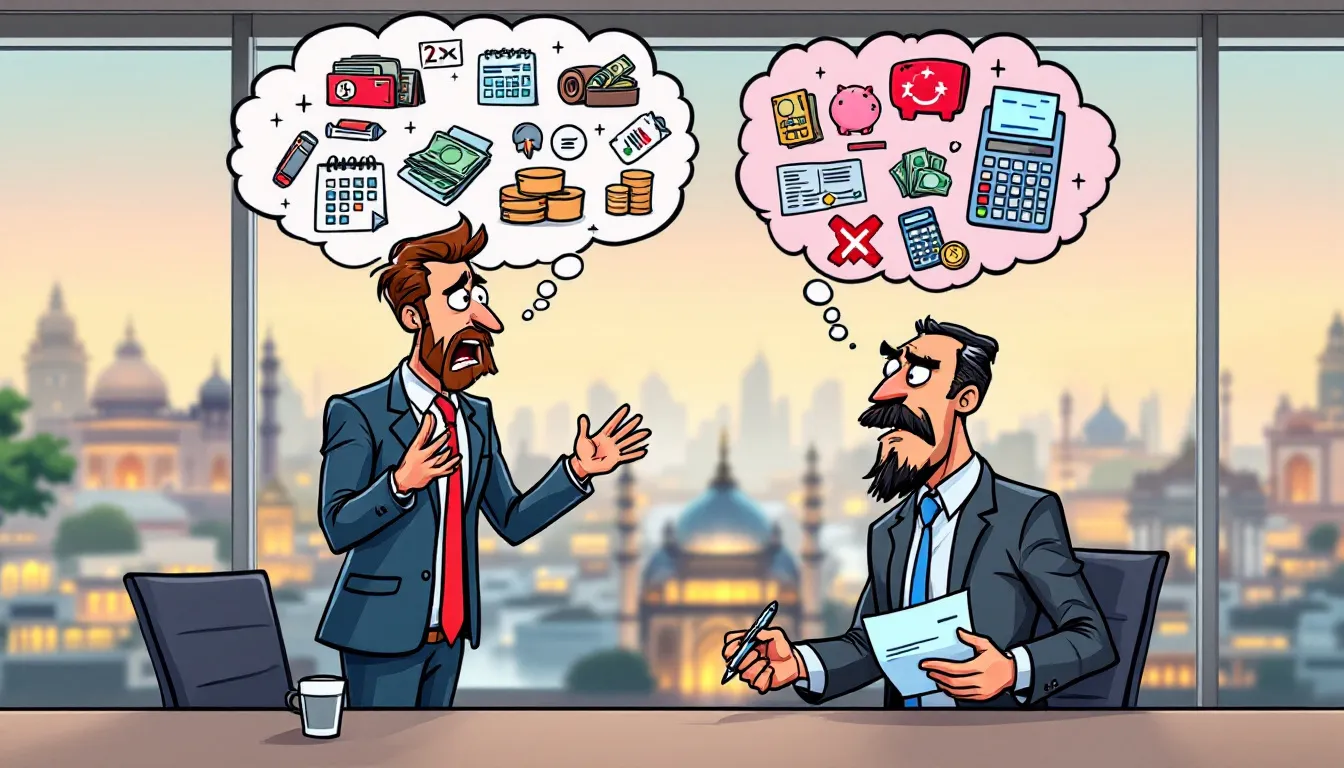Architects in India struggle with client payments due to economic instability and project disputes. In this article, we will explore why architects in India struggle with client payments how to handle it, explaining these challenges and offering solutions to manage and mitigate payment delays effectively.
Common Challenges in Client Payments for Architects in India

Architects typically face numerous challenges when it comes to securing timely payments from clients. Issues such as client financial instability and disputes over project specifications often lead to delayed payments, which can disrupt project timelines and affect financial stability. Many architects encounter these problems regularly, making it a significant concern within the architectural practice.
Understanding these challenges is the first step toward finding effective solutions.
Economic Factors
Economic factors play a crucial role in payment delays for architectural services. Market fluctuations and economic downturns create uncertainty in project financing, often resulting in delayed payments for architectural firms. This volatility can exacerbate the timing and security of payments, making it essential for architects to manage their financial resources effectively.
Robust financial management strategies allow architects to navigate inconsistent cash flow, ensuring their practice’s sustainability.
Client Behavior
Client behavior is another critical factor contributing to payment delays. Aligning client goals and budget constraints from the outset helps minimize conflicts throughout the project. Setting client expectations from the beginning significantly reduces disputes and enhances client satisfaction.
Clear upfront payment terms reduce disputes and ensure timely payments.
Legal Protections for Architects

Legal protections are indispensable for architects and licensed architect construction professionals to safeguard their financial interests and manage risks associated with unpaid fees. By engaging with clients through written agreements, architects can ensure that their earnings are secured and that financial risks are minimized.
Legal frameworks help architects recover unpaid dues and mitigate the effects of delayed payments.
Well-Drafted Contracts
A well-crafted contract is a cornerstone of effective architectural practice. Clear contracts outline responsibilities, payment terms, and provisions for unforeseen issues, thereby minimizing potential litigation. Legal experts advise including specific payment terms and penalties for late payments to enhance compliance and streamline payment processes.
These contract elements reduce late payments and ensure financial stability for architects.
Advance Payments
Requesting advance payments is a practical strategy to secure funds before project commencement, improving cash flow and mitigating financial risks. Requiring upfront payments ensures continuous cash flow and reduces financial uncertainties during project phases.
Securing project funding immediately enhances financial stability throughout the project.
Taking Legal Action
In cases where clients fail to pay, pursuing legal action may become necessary to recover unpaid fees. Architects should consider consulting a lawyer who specializes in contract disputes to navigate the legal processes effectively. Understanding legal procedures and having a clear strategy aids architects in recovering dues and protecting financial interests.
Financial Management Strategies
Effective financial management strategies are crucial for architects to handle delayed payments and maintain financial stability. Various budgeting techniques and technology help architects manage project costs and streamline financial processes.
These strategies not only enhance payment management but also improve client relationships and organizational efficiency.
Budgeting for Delays
Creating a reserve fund and detailed revenue projections are essential for managing expenses during periods of late payments. Setting aside earnings creates a financial buffer for covering expenses during payment delays.
Additionally, maintaining a cash flow forecast helps anticipate potential payment delays and plan accordingly, ensuring financial stability throughout the project.
Diversifying Income Streams
Offering various architectural services can create multiple revenue sources, thereby reducing the reliance on a single project. Architects can enhance their financial stability by providing services such as consulting, project management, and design workshops. This diversification not only mitigates financial risks but also improves the overall sustainability of the architectural practice.
Efficient Invoicing
Implementing clear invoicing practices is vital for improving cash flow and reducing payment delays. Prompt, clear invoicing with timely follow-ups ensures payments are received promptly, maintaining stable cash flow.
Automated invoicing systems streamline the billing process, reducing administrative workload and minimizing payment delays.
Building Strong Client Relationships

Building strong relationships with clients is crucial for ensuring timely payments and maintaining a healthy cash flow. Clear communication and transparent discussions about payment terms foster trust and improve payment reliability.
These practices not only enhance client satisfaction but also contribute to smoother project execution.
Clear Communication
Transparent discussions regarding project timelines and costs are essential to align client expectations and avoid potential conflicts. Understanding the client’s perspective and offering flexible payment solutions enhance negotiation outcomes and foster better client relationships.
Clear communication about work scope and payment expectations prevents misunderstandings during negotiations.
Setting Expectations
Effective contracts that specify terms clearly are crucial for minimizing misunderstandings and disputes. A comprehensive contract clarifies the services provided and payment terms, protecting fees and ensuring smoother project execution.
A clear understanding of project requirements strengthens the negotiating position with clients and ensures timely payments.
Regular Updates
Providing clients with consistent updates on project progress helps to reinforce the perceived value of the services and keeps them engaged. Frequent updates keep clients informed and reinforce trust in the architect’s capabilities and project progress.
Ongoing communication is essential for maintaining client relationships and ensuring timely payments.
Leveraging Technology

Leveraging technology can significantly enhance payment management and client communication for architects. Digital tools and structured communication plans improve transparency and keep clients informed.
These technological advancements streamline processes and facilitate better organization and efficiency.
Project Management Software
Project management computer software allows architects to centralize project information, improving organization and coordination among team members. Specialized software reduces errors and enhances collaboration, leading to smoother project execution in computer aided design and technical drawings.
This technology not only streamlines processes but also enhances communication with clients.
Automated Invoicing Systems
Automated invoicing systems can significantly streamline the billing process for architects, reducing the chances of delays in payment. Integrating project management software with invoicing facilitates real-time expense tracking and simplifies billing.
These systems enhance client engagement by providing immediate access to invoices and payment histories.
Client Portals
Client portals serve as a centralized platform for architects and clients to communicate, providing real-time updates on project progress. Client portals enhance transparency and facilitate better communication, ensuring timely billing and payment tracking.
By using client portals, architects can maintain a more organized and efficient workflow, leveraging their architectural knowledge.
Case Studies

Real-life case studies illustrate how many architects in India have successfully navigated the challenges of client payments by implementing effective strategies. These examples show potential for positive outcomes in difficult circumstances, offering valuable insights for other architects.
Success Story 1
One architect improved their payment timelines significantly by implementing strict contract terms that clearly defined payment schedules and consequences for late payments. Incorporating terms like advance payments and clear deliverable timelines significantly reduced client payment delays.
This strategy improved cash flow and made income more predictable.
Success Story 2
Another architect successfully maintained a steady cash flow by requiring advance payments, which minimized financial risks associated with project delays. Budgeting for potential delays and creating a reserve fund ensured liquidity for ongoing projects.
This approach ensured a more reliable cash flow and sustained project momentum.
Success Story 3
A third project architect faced significant challenges with delayed payments and inefficient invoicing processes. The architect implemented project management software and automated invoicing systems to better track payments and improve client communication.
This led to a significant reduction in payment delays and improved overall client relationships.
Expert Tips
Experts recommend several strategies to help architects manage payment challenges effectively. Tips include negotiation techniques, long-term financial planning, and seeking legal advice for complex payment issues.
Negotiation Techniques
Effective negotiation ensures that both parties understand and agree to payment expectations. By clearly articulating the benefits and value of architectural services, architects can persuade clients to agree to more favorable payment terms.
Effective negotiation maintains client relationships and ensures timely payments.
Financial Planning
Long-term financial planning that accommodates potential delays in client payments is essential for maintaining business stability. Diversifying income sources and establishing best invoicing practices reduce dependency on a single project and mitigate financial risks.
These strategies ensure that architects can manage cash flow effectively and maintain financial stability.
Legal Advice
Legal consultation provides tailored strategies for navigating payment challenges and protecting architects’ interests. Drafting detailed contracts and understanding legal remedies for unpaid fees mitigate risks and ensure timely payments.
Legal protection insurance can alleviate the burden of legal costs related to unpaid fees.
Summary
In conclusion, architects in India face significant challenges with client payments, but effective strategies and tools can mitigate these issues. By understanding economic factors, client behavior, and leveraging legal protections, architects can safeguard their financial interests. Implementing financial management strategies, building strong client relationships, and utilizing technology further enhance payment management. Real-life case studies and expert tips provide valuable insights for navigating these challenges. By adopting these practices, architects can ensure the financial stability and success of their practice. “`markdown
Frequently Asked Questions
What are the common challenges architects face with client payments in India?
Architects in India commonly face challenges with delayed payments stemming from client financial instability, disputes over project specifications, and unrealistic expectations. Such issues can significantly disrupt project timelines and jeopardize financial stability.
How can legal protections help architects manage financial risks?
Legal protections enable architects to secure their earnings through well-drafted contracts and advance payments, thereby managing financial risks associated with unpaid fees. Engaging with clients via written agreements and consulting legal experts are essential to this process.
What financial management strategies can architects use to handle delayed payments?
To effectively handle delayed payments, architects should establish a reserve fund, diversify their income streams, and implement efficient invoicing practices. These strategies will help maintain cash flow and mitigate the impact of payment delays.
How does leveraging technology improve payment management for architects?
Leveraging technology significantly enhances payment management for architects by streamlining processes and improving communication through tools like automated invoicing systems and client portals. This leads to increased organizational efficiency and strengthens client relationships.
What expert tips can help architects negotiate better payment terms?
To negotiate better payment terms, architects should present a clear value proposition, understand the client’s needs, and offer flexible payment solutions. Additionally, long-term financial planning and obtaining legal advice are essential for securing timely payments.
The post Why Architects in India Struggle with Client Payments and How to Handle It first appeared on jobs.archi.

